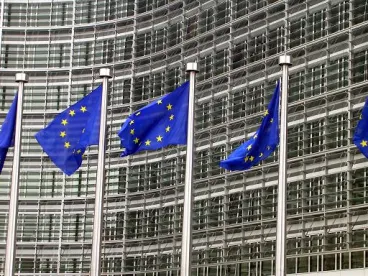In May 2022 the European Commission (EC) adopted the Vertical Block Exemption Regulation (VBER) and the new accompanying Vertical Guidelines (Guidelines). See GT Alerts, The New VBER and Vertical Guidelines Explained: Key Takeaways, June 2022 and Distribution Agreements in the EU: Changes After VBER and Accompanying Guidelines are Revised, November 2021. The VBER continues to exempt agreements with genuine commercial agents for the application of competition law, and the Guidelines now also provide detailed guidance on how to assess that agency function on a per product or service basis. Otherwise, the provisions regarding agency agreements have not significantly changed. However, to prevent abuse of the exemption, the new VBER calls for a narrow interpretation of agency agreements that seek to benefit from the exemption.
Seemingly unrelated to the guidance on the interpretation of agency agreements, compared to the old VBER guidance, the Guidelines clarify the EC’s position on multi-principal agents. The Guidelines now explain, with reference to the ECJ’s 1987 decision in the Vlaamse Reisbureaus case, that:
“it is less likely that an agency agreement will be categorised as falling outside the scope of Article 101(1) of the Treaty where the agent negotiates and/or concludes contracts on behalf of a large number of principals”.1
Vlaamse Reisbureaus case
In Vlaamse Reisbureaus the ECJ considered the relationship between a tour operator and a travel agent, where the latter acted on behalf of the operator by using its name and did not bear any risks from this activity. Notwithstanding the agent acting on behalf of the operator, the ECJ concluded that the agreement between them could not be considered genuine agency because a travel agent works for a large number of principals, whereas a principal works with a large number of agents. Therefore, such an agent could not be treated as an auxiliary part of the principal.2
The decision was criticized when it came down 35 years ago, as in principle the fact that an agent is working with multiple principals does not affect the nature of each individual agency relationship in competition terms. Although understandable that the EC in its regulations cannot challenge ECJ findings on competition law matters, the EC’s deference to the ECJ’s Vlaamse Reisbureaus ruling in providing guidance on today’s competition law is not justified, also because the ECJ itself has already moved away from the Vlaamse Reisbureaus precedent by strictly focusing on the agent’s economic function.
ECJ’s opposite positions
In December 1975, the ECJ ruled in the famous Suikerunie case that representatives can lose their status as independent traders only if they do not bear any of the risks resulting from the contracts negotiated on behalf of the principal and they operate as auxiliary organs forming an integral part of the principal’s undertaking.3
In Bundeskartellamt v Volkswagen AG and VAG Leasing, the ECJ partly reconsidered the above position regarding genuine agency, ruling that an agency is genuine only if the agent does not bear any of the risks resulting from the contracts it as agent negotiated on behalf of the principal. Therefore, such agents act in an auxiliary function and thus form an integral part of the principal’s undertaking.4
In CEEE v CEPSA, the ECJ followed the same approach and even provided more clarity about what constitutes genuine agency. The ECJ, as to determining an intermediary’s independence, found the decisive test for purposes of the competition law is not the formal separation between two parties resulting from their separate legal personality, but the real unity of their conduct on the market.5
The risk allocation determines the intermediary’s ability to independently make decisions on its business conduct. If the principal assumes all the financial and commercial risks regarding the economic activity concerned, the agent depends entirely on his principal, despite being a separate legal entity.6 This demonstrates that in the years after Vlaamse Reisbureaus, the ECJ had already moved away from the notion that an agent having many principals would indicate it is not integrated. Genuine agency is determined in economic terms only and must be analysed on a case-by-case basis, taking into account the real economic situation rather than the legal classification of the contractual relationship in national law.7
In Cepsa v Tobar, a case involving distribution agreements for retail sales of motor vehicle fuel in petrol stations, the ECJ found that as the distributor had only a negligible share of the risks associated with the concluded transactions, the distributor in fact had not become an independent economic operator. Furthermore, for competition law purposes the resulting contractual relationship between the distributor, as the operator of the petrol station, and the principal, as the supplier of the fuels, was identical to that between an agent and his principal.8
Based on the above, Vlaamse Reisburaus does not stand in the way of applying a purely economic test to determine whether an agent is exempted from competition law, as the previous Guidelines provided.9
When a social media influencer shares links with their followers to a brand’s website with specific offers, the followers likely consider the influencer a brand agent, notwithstanding that they share similar links for many other brands.
Conclusion
The EC’s position set out in the new Guidelines with the specific reference to Vlaamse Reisbureaus seems outdated. Why then was this reference made without mention of the subsequent ECJ cases noted above, where the economic approach prevailed?
The logical explanation would be to see this reference to a functional rather than economic disqualification for the applicability of the agency exemption and that the EC is trying to keep all options open as regards large online platforms that use or seek to use the agency model to benefit from its exemption from competition law.10
However, this leaves the current guidance with a confusing message as regards multi-principal agents, where the functional disqualification does not align with how ECJ competition law in respect of this distribution model has applied the genuine agency test.
For those agents working with multiple principals but otherwise not bearing any risks in the transactions resulting from their agency activity, the new guidance makes self-assessment unclear and burdensome. Therefore, the EC should provide further guidance and clarification.
FOOTNOTES
1 See Commission guidelines on vertical restraints (2022), paragraph 30.
2 See Case 311/85, 1 October 1987, ASBL Vereniging van Vlaamse Reisbureaus contre ASBL Sociale Dienst van de Plaatselijke en Gewestelijke Overheidsdiensten, paragraph 20.
3 See Joined Cases 40/73 to 48/73, 50/73, 54 to 56/73, 111/73, 113/73 and 114/73 Suiker Unie and Others v Commission [1975] ECR 1663, paragraph 539, ECLI:EU:C:1975:174.
4 See Case C-266/93, October 1995, Bundeskartellamt contre Volkswagen AG and VAG Leasing, paragraph 19.
5 See Case C-217/05, 14 December 2006, Confederación Espanola de Empresarios de Estaciones de Servicio v CEPSA, paragraph 41, ECLI:EU:C:2016:414.
6 See Case C-217/05, 14 December 2006, Confederación Espanola de Empresarios de Estaciones de Servicio v CEPSA, paragraph 44, ECLI:EU:C:2016:414
7 See Case C-217/05, 14 December 2006, Confederación Espanola de Empresarios de Estaciones de Servicio v CEPSA, paragraph 46, ECLI:EU:C:2016:414
8 See CEPSA Estaciones de Servicio SA v. LV Tobar e Hijos, paragraph 40, ECLI:EU:C:2008:485.
9 See Commission guidelines on vertical restraints (2010), paragraph 13
10 The question of how broadly the agency concept extends is, e.g., important to the question of whether Article 101(1) TFEU covers arrangements in digital markets between suppliers and platforms. It seems possible that an arrangement between a supplier and a platform could constitute a “genuine” agency one falling outside the reach of Article 101(1) TFEU, where ownership of the products/services is not passed to the platform, where contracts concluded are formed between the supplier and customer, and where the platform does not bear any of the risks related to the sale or provision of the goods or services while receiving a commission or remuneration for concluded contracts, resulting in a “platform gap”.




 />i
/>i

